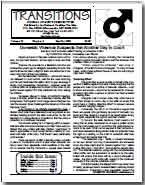This is an edited version of a research paper by Prof. Bob Birrell, Virgonia Rapson, and Clare Hourigan, of the Monash University Centre for Population and Urban Research for the Australian Family Association written in March 2004. Their insights are still very current today.
Economic changes over the past 20 years have conspired to create a growing underclass of single low income males (SLIMs) without the financial resources to marry and support a family. Consequently, this study shows that primarily it is not the DINKs (dual income no-kids) behind the decline in Australia’s fertility rate. Rather, the decline in marriage and fertility is largely among the SLIMs. In 1986 most women were partnered by their late twenties. By 2001 only a bare majority, 53%, were partnered. In 1986, 71% of men had partnered by their mid thirties, but by 2001 this had shrunk to 59%.
After the economic boom of the 1990s and 20 years of “free market”, economic rationalist, structural economic change – deregulation of financial markets, cutting tariffs, labour market deregulation, privatisation, deregulation of agriculture, etc. – there have been economic winners and losers. The losers are essentially defined as being not in full-time work, have no post-school education, and are living on less than $31,200 p.a. (many on less than $15,600 p.a.). The structural economic changes have induced social change:
There is a growing UNDERCLASS, made up of men who have no further education after leaving school, who are losing out in the job market. The critical condition for marriage is a full-time job. Large numbers of men in this underclass are not in full-time work.
Lacking the financial resources and facing higher housing and child rearing costs, they are also losing out in the marriage market. More than half of all men in their late 20’s and early thirties have no post-school qualifications whatsoever. Since 1986 there has been a significant increase in the proportion of men who don’t have a full-time job.
By 2001 1/3 of men aged 25-29 were not in full-time work and 28-29% of those in the 30-44 age group were also not in full-time work. The lower the income the lower the marriage and partnering rate and the higher the divorce and separation rate. The marriage rate amongst these men is plummeting and the divorce rate is more than double that of men on higher incomes. If this trend continues into the future, the majority of such men could soon be unpartnered.
Married men are increasingly from the ranks of the better off. Amongst the tertiary educated, there is a much higher marriage rate, and much lower divorce rate. From 1986 to 2001, the marriage rate for women with degrees aged 25-29 actually rose slightly, while the marriage rate for other women fell. With higher incomes and job stability, people are more able to hold a family together. Higher qualified men have tended to have a higher marriage rate than other men. While this is not new, what is new is the growing gap between the two groups.
The revolution in marriage is affecting fertility: Australia’s fertility rate in 2001 was 1.73, down from 2.8 in the late ’60s and well below the replacement rate of 2.1 children per woman over a life time. Married women without bachelor degrees are still the most fertile, having about 2.28 children per woman (35-39 years). The problem is that the marriage rate for this group has plummeted as the job situation for their potential partners has deteriorated. This is the primary cause of the decline in fertility since 1986.
Full-time male employment is the key to marriage. Marriage is the key to fertility. This contradicts the popular view conveyed by Sex in the City and lifestyle magazines that give the impression that it is the wealthy who divorce and remarry, or live swinging singles lifestyle. On the contrary, professionals have the highest marriage rates and the most stable marriages, if not the highest fertility rate. There is a marriage gap for tertiary educated females, as they significantly out-number their tertiary educated male counterparts. However, this problem is not the primary cause for falling marriage and fertility rates. The Study Men and Women Apart is based, not on sample survey data, as are many other social reports, but on population data from the 1986, 1996 and 2001 censuses. It also draws on data from the Household, Income and Labour Market Dynamics in Australia (HILDA) and from the Commonwealth Department of Family and Community Services.
Government have not calculated the true cost of men not being in full-time work. The true cost is much more than their welfare. There is the added costs of welfare for the women they cannot afford to marry and the children these women are having alone.
Then there is the cost of having these children at risk – cost in education, drugs and crime. There are also higher health costs for people on welfare.
We need more education and skills training. Also needed are tax, welfare and family payments geared to boost male incomes to put them in reach of marriage.


